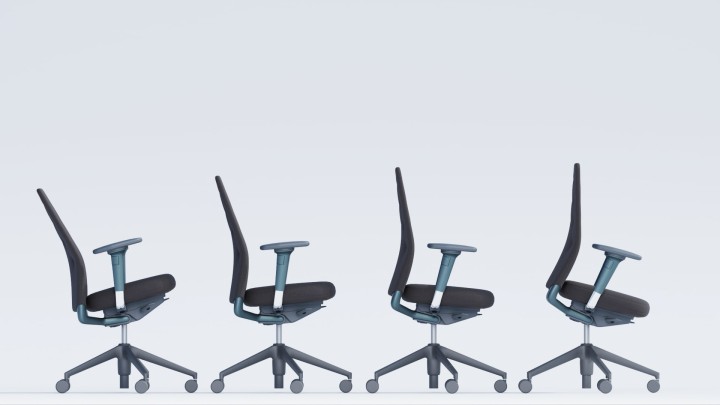Briefly explained - the rocking mechanism
The rocker mechanism is a feature found on many office and swivel chairs. A rocker mechanism ensures that the backrest and seat can tilt backwards together and synchronously at the same angle when leaning back. This makes it possible to vary the posture while sitting and creates dynamism. When the seat is tilted, the seat and backrest remain at the same angle. The armrests usually tilt at the same time. Depending on the chair, the resistance for the rocking function can be adjusted; this is important in order to be able to set the resistance to suit the body weight. The resistance can usually be adjusted using a rotary control on the underside of the chair. In short, an office chair with a rocking function is similar to a rocking chair because the sitting angle remains the same. Although the movement creates dynamism and activates muscles in the abdomen and back, the sitting posture does not change. Nevertheless, leaning back can help to relieve the back and intervertebral discs a little. The movements during rocking prevent rigid, monotonous sitting and ensure that the body and circulation do not come to a standstill. In this way, working at a desk can be made more ergonomic in the long run. Whether for executive chairs, office chairs, home office chairs or gaming chairs, rocker mechanisms can be found almost everywhere. Since the rocker mechanism can be found in many office chairs and other seating options, there are chairs with this mechanism in different price ranges.
The alternative: synchronous mechanism
Office chairs with a synchronous mechanism are very similar to office chairs with a rocker mechanism. With this mechanism, too, the angle of the backrest can be adjusted. However, unlike a swivel chair with a rocking mechanism (and as the name suggests!), the seat does not tilt to the same extent. The seat-to-backrest tilt ratio is 2:1, so if the backrest tilts at a 30° angle, the seat surface will only tilt 15°. This opens up the pelvis and makes sitting even more dynamic than the classic rocking mechanism. The back is thus better supported and encouraged. The feet can remain on the floor while the back is stretched and the pelvis is opened. Which mechanism is more comfortable and pleasant for the user depends on the person's personal preferences and body composition. Trying out different mechanisms is a good way to find the best office chair for you. Both mechanisms are a good way to sit more ergonomically at your desk and to integrate some movement into your daily work routine. If you need advice, feel free to contact us - we will help you!



